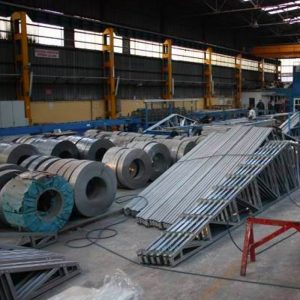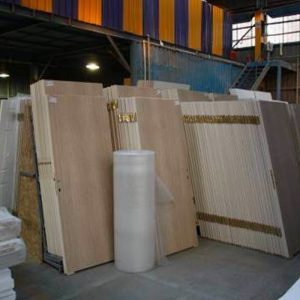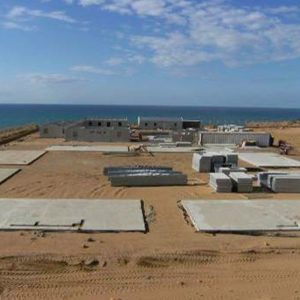Construction
- Prefabricated Construction
MCC Group’s prefabricated construction solutions benefit high production speed, ease of transportation and simple assembly advantage through the use of high technology and quality products.
- Steel Construction
MCC Group’s experience in steel construction enables us to create functional designs.
Finished
production line
Onsite Preparation
and Erection
Modular Construction
The word “modular” describes a construction method or process where individual modules, stand-alone or assembled together, make up larger structures. Many buildings erected today use factory-built construction as part of the process. The choice to build in this way is determined by the client’s requirement for quality assurance, accuracy and speed of construction. Once the design is approved by the client and regulating authorities, assembly takes place in a controlled environment. At the same time, on-site work is undertaken to prepare the infrastructure and foundations. There is no wait to build. The modular parts are constructed and transported to the final destination, ready to be erected immediately.

Why Modular?
A modular build offers the following benefits:

Construction Solutions
Modern healthcare requires a high level of quality assurance across a variety of interrelated disciplines in order to ensure safe treatment and shorten recovery times. Advances in medical care are such that the hospital environment can directly impact on the ability to deliver care at highest level. Hospital design must contribute to the overall experience of a healthcare system, so that medical staff and patients alike are able to offer the very best treatment.

The Benefits of Modular Construction
Modular construction offers clients the opportunity to create sustainable designs to lessen the environmental impact. Construction off-site reduces wastage, both in terms of materials and on-site activity. Building materials are stored securely off-site, thereby both preventing damage and deterioration, whilst also guarding against potential theft. Off-site production reduces disruption to the surrounding area, minimises vehicular traffic to and from the site and improves overall safety and security. Construction hazards are kept to a minimum. Build times on-site are reduced by 50% to 60%. Prefabrication off-site offers the opportunity to consider economics of scale, drastically reducing costs in the long-term. Fewer labourers are required for the on-site construction, with, often, lower professional fees, as the need for specialist input has already been integrated into the overall design. Integration of design and construction at a modular level offers unparalleled ease of maintenance and service..

Light Guage Steel Framework
- Light Gauge Steel Framework (LGSF) is an integral part of modular construction. A profiled steel frame is used as the framework for a building, whether residential, commercial or industrial. It is durable, lightweight and stable. A variety of claddings can be used to cover the building. This system is commonly used in the US, Australia, New Zealand and Europe. The structure is quick and easy to erect, and reduces the overall costs of building by 20% to 25% when compared with conventional building methods. Due to the robust nature of the framework, internal finishes are protected against damage during transportation and erection. LGSF members (sometimes also called cold formed steel) are made from structural quality sheet steel formed into shapes either through press braking blanks, sheared from sheets or coils, or by roll forming the steel through a series of dies. Light gauge steel products are usually thinner, faster to produce, and cost less than their hot formed counter parts.





